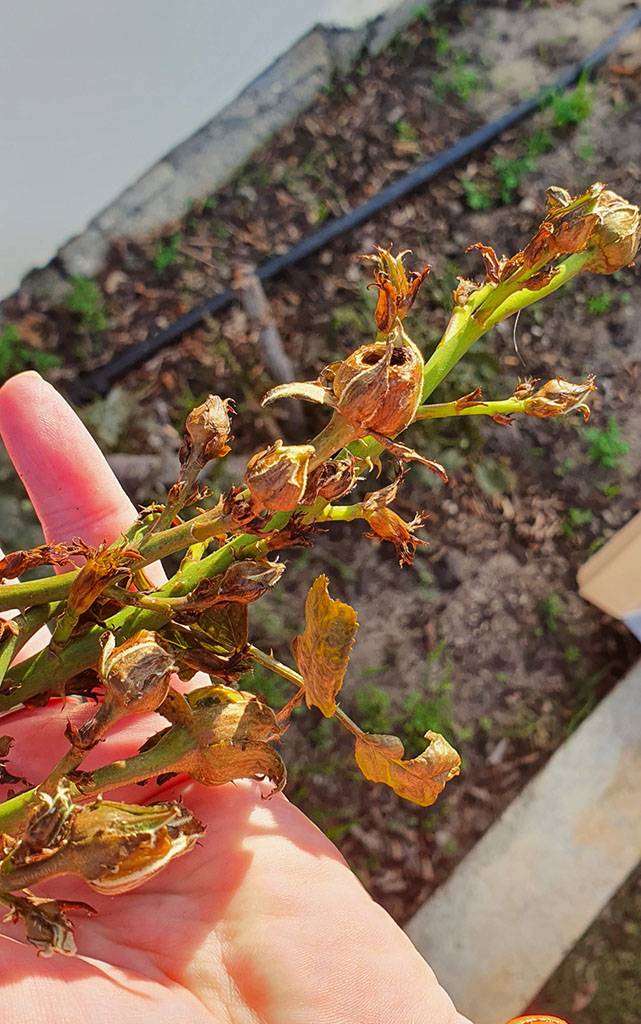Identifying Chilli thrips
A Chilli thrip is about 2 millimetres in length which makes it a bit hard for most of us to actually see without a magnifying glass and, while you would expect to see the larvae on the top surface of the leaves, you will also find adult thrips on the underneath surface too … so the first thing you should be looking for is damage to your roses.
Some of the signs that you have a problem with Chilli thrips include:
- Discolouration of the leaves surrounded by little black dots … Chilli thrip poo … seriously.
- Curling leaves with light brown spots
- Wrinkled leaves along leaf veins … that’s the best place for these little buggers to tap into the plant sap … and discolouration on any buds.
- Patches on the leaves with clear spots where the thrips have sucked out all the sap.
- Deformed shoots or flowers on infested plants. These are caused by the thrips’ saliva.
Treating the problem
While some sprays may work there is only one way to make sure that you can get rid of Chilli thrips on your roses … at least for a while.
Prune HARD … even if it is not the right time of year to prune your roses.
Don’t throw loose cuttings in the garbage bin … place the cuttings in a strong plastic bag, seal it with a twist-tie and place the bag in the bin. Loose cuttings just help spread the problem.
Clean your tools after each plant. If you don’t you may just be carrying the thrips from one food supply to another.
Be aware that the problem will return, Chilli thrips have been around for a very long time and it is unlikely that we will ever eradicate them … but at least we can make life hard for them if we watch for them and treat our roses as soon as we find thrips on them.



